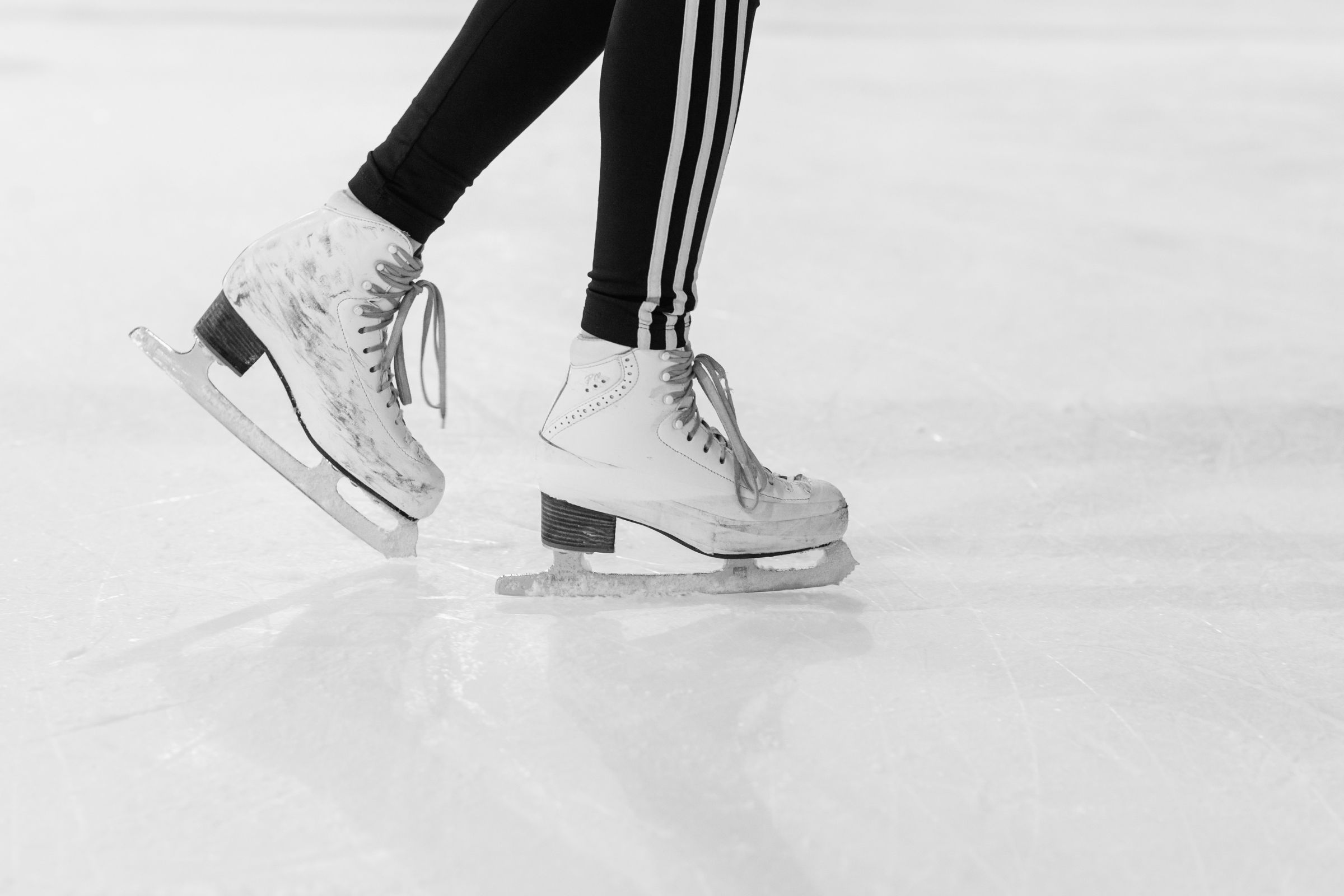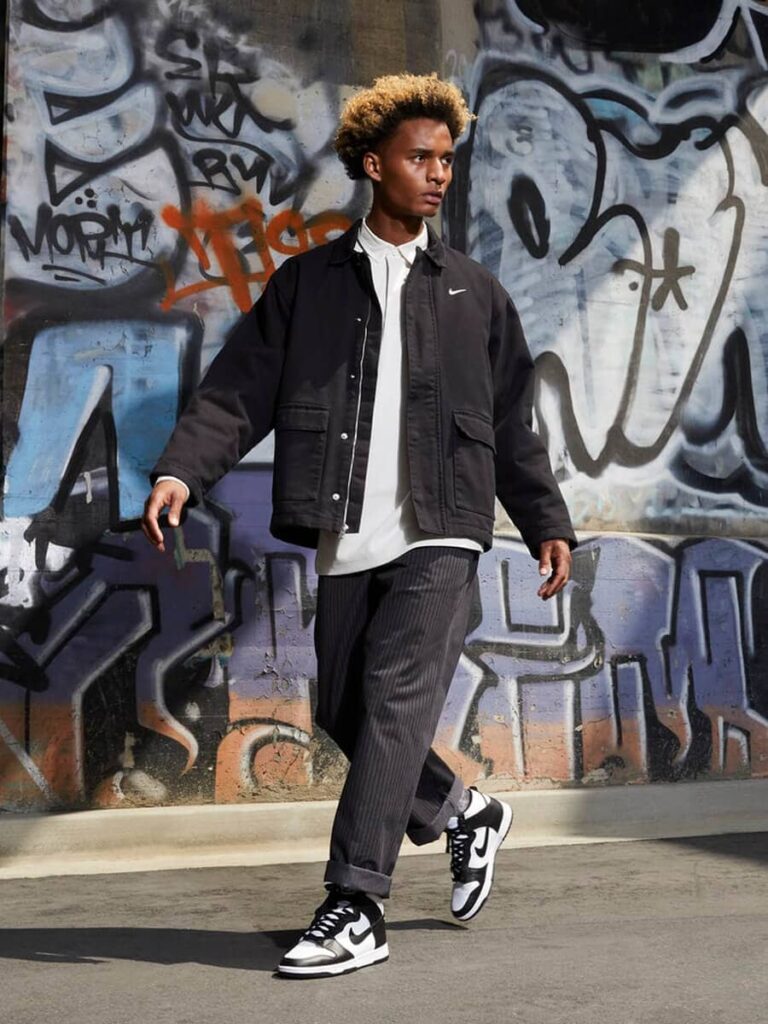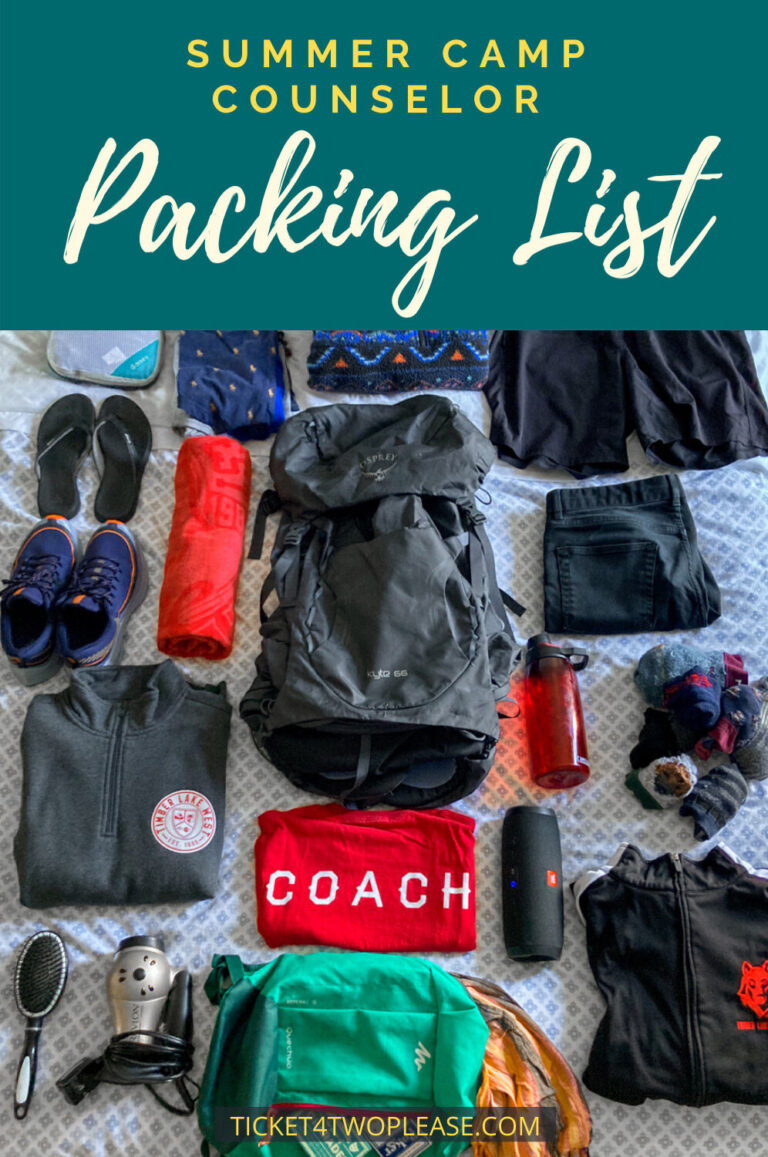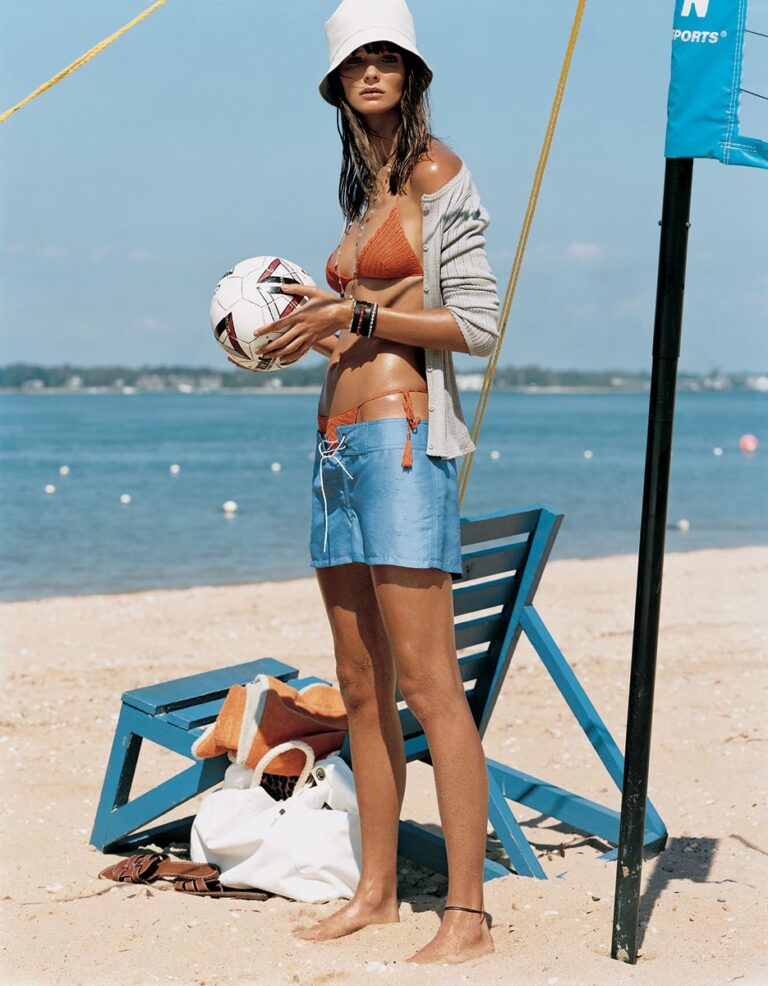Wear thick, cushioned socks to provide warmth and comfort while ice skating. When it comes to ice skating, wearing the right socks is essential for a comfortable and enjoyable experience.
The cold ice can quickly make your feet chilly, so it’s important to wear thick and cushioned socks to keep them warm. Not only do these socks provide insulation, but they also offer an extra layer of padding, which can help prevent blisters and improve overall comfort.
To maximize your ice skating performance, opt for socks made of moisture-wicking materials that can keep your feet dry and prevent any potential discomfort. By choosing the right socks, you can ensure that your feet stay cozy and protected while gliding gracefully on the ice.

CRS Cross Figure Skating Socks
CRS Cross Premium Ice Skating Socks offer a silky soft, breathable fit with a low-profile toe seam for ultimate comfort. Designed for figure skaters, these knee-high stockings provide a sleek fit in boots with non-constricting elastic to stay up without slipping. Made from luxury microfiber and spandex, they stretch easily to fit most leg sizes while keeping warmth in. Each order includes two pairs in fun mix-and-match colors, coordinating with CRS Cross skate accessories. Designed by a former US professional skater, these socks are a must-have for any skater.
Read also: What Not to Wear Ice Skating : Essential Tips for the Perfect Outfit
Skating into Fun: Your First Time Ice Skating Outfit!
5 Best Socks to Wear While Ice Skating
1. CRS Cross Figure Skating Socks

2. Giegxin Ice Skating Socks

3. Satinior Ice Skating Socks

4. Skating Spirit Figure Skating Socks

5. Geyoga Padded Skating Socks

Factors To Consider When Choosing Ice Skating Socks
When ice skating, it is important to consider factors such as thickness, material, and fit of the socks. This ensures comfort, warmth, and reduced friction, enhancing your performance on the ice.
Ice skating is a thrilling winter activity that requires the right gear to stay comfortable and perform at your best. While choosing the right pair of ice skates is crucial, many skaters often overlook the importance of wearing suitable socks.
The right socks not only provide comfort but also help prevent blisters and improve overall performance on the ice. Here are some key factors to consider when choosing ice skating socks:
Material And Fabric – How Different Sock Materials Affect Comfort And Performance:
- Merino Wool: This natural fiber is a popular choice for ice skating socks as it offers excellent insulation while keeping your feet comfortable and dry. Merino wool socks provide warmth without excessive bulk and are naturally moisture-wicking.
- Synthetic Fabrics: Materials like nylon and polyester offer durability, moisture-wicking properties, and quick drying abilities. Synthetic socks are often designed with specific zones to provide cushioning and support in key areas, reducing pressure points and enhancing comfort.
- Cotton: While cotton may seem like a comfortable option, it is not ideal for ice skating. Cotton socks retain moisture, which can lead to cold, damp feet, and increase the risk of blisters. It is best to avoid wearing cotton socks while ice skating.
Thickness – The Optimal Thickness For Different Ice Skating Conditions:
- Thin/Silk Socks: These lightweight socks are ideal for ice skating in warm indoor rinks or during mild weather conditions. They provide a close fit and allow for better feel and control on the ice.
- Medium Thickness: Socks with medium thickness are suitable for most average ice skating conditions, offering a balance between warmth and breathability. They provide adequate cushioning and insulation while still allowing for good skate control.
- Thick/Wool Socks: For very cold conditions or outdoor ice skating, thicker socks made of materials like wool can provide exceptional warmth. Keep in mind that bulky socks may alter skate fit and responsiveness, so ensure they still allow for proper movement and comfort.
Moisture-Wicking – How Moisture-Wicking Socks Keep Your Feet Dry And Prevent Blisters:
- Moisture-wicking socks are designed to pull moisture away from the skin and to the outer layers of the fabric, where it can evaporate more easily. This helps keep your feet dry, reducing the risk of blisters and discomfort.
- Look for socks with moisture-wicking properties, either through the use of specialized fabrics or construction techniques like mesh panels. These socks will help regulate temperature and prevent excessive sweating during intense ice skating sessions.
Compression – The Benefits Of Wearing Compression Socks For Ice Skating:
- Compression socks provide targeted support, enhance blood circulation, and reduce muscle vibration and fatigue. These benefits can be especially valuable for ice skaters who engage in rigorous training or longer skating sessions.
- Compression socks can help improve muscle recovery, reduce swelling, and increase overall comfort. They offer a close, snug fit that supports the arches and ankle joints, providing stability and reducing the risk of injury.
Fit – Ensuring The Right Fit For Maximum Comfort And Support:
- Properly fitting ice skating socks are essential for comfort, support, and overall performance. Ill-fitting socks can result in blisters, discomfort, or a lack of responsiveness while skating.
- Choose socks that provide a snug and supportive fit without being overly restrictive. Avoid socks that are too loose, as they can bunch up and cause discomfort or affect skate fit.
- Pay attention to the sock length as well. Ideally, the socks should reach above the top of your ice skates to prevent skin irritation and provide additional ankle support.
Remember that the right socks are just as important as the right skates when it comes to ice skating. Consider the material, thickness, moisture-wicking properties, compression benefits, and fit to ensure your socks enhance your skating experience. By selecting the best socks for your needs, you can improve comfort, prevent blisters, and optimize performance on the ice.

Credit: albanykid.com
Best Sock Materials For Ice Skating
Discover the ideal sock materials for ice skating; from moisture-wicking properties to insulation, these socks provide maximum comfort and protection on the ice. Whether blended with merino wool or synthetic fibers, these socks will keep your feet warm and dry, ensuring an enjoyable skating experience.
Merino Wool – The Advantages Of Merino Wool Socks For Insulation And Moisture Management:
- Merino wool socks are an excellent choice for ice skating due to their impressive insulation properties.
- These socks efficiently retain body heat and keep your feet warm during cold winter days on the ice.
- Merino wool also has exceptional moisture management properties, wicking away sweat and preventing your feet from becoming damp.
- The natural fibers in merino wool are breathable, allowing for better airflow and reducing the chance of sweat build-up.
- Additionally, the soft and smooth texture of merino wool makes it a comfortable choice for all-day wear on the ice.
Synthetic Fabrics – The Benefits Of Synthetic Fabrics Like Nylon And Polyester For Durability And Quick Drying:
- Synthetic fabrics such as nylon and polyester offer excellent durability when it comes to ice skating socks.
- These materials are known for their resistance to wear and tear, ensuring your socks last longer even with frequent use.
- Synthetic socks also dry quickly, making them ideal for ice skating since they won’t stay damp for long periods.
- Their moisture-wicking properties help to keep your feet dry and comfortable during rigorous ice skating sessions.
- Moreover, synthetic fabrics are often blended with other materials to enhance their performance and provide additional benefits.
Silk – How Silk Socks Provide A Smooth And Comfortable Fit For Sensitive Feet:
- Silk socks offer a luxurious and smooth feel, providing a comfortable fit for those with sensitive feet.
- The natural properties of silk allow it to regulate temperature, keeping your feet warm without overheating.
- Silk is also known for its moisture-wicking abilities, effectively managing sweat and reducing the likelihood of blisters or discomfort.
- With their lightweight and breathable nature, silk socks prevent your feet from feeling constricted while gliding on the ice.
- For individuals who prioritize comfort and have sensitive feet, silk socks are a top choice for ice skating.
Blended Materials – The Advantages Of Socks That Combine Different Materials For Optimal Performance:
- Socks that combine different materials offer a balance of advantages, optimizing overall performance.
- Blended materials may include a combination of merino wool, synthetic fabrics, silk, or other suitable fibers.
- By blending materials, these socks provide improved insulation, moisture management, durability, and overall comfort.
- The combination of natural and synthetic fibers allows for better breathability and temperature regulation.
- Blended material socks provide the best of both worlds and are a versatile option for ice skaters seeking optimal performance and comfort on the ice.
Choosing The Right Thickness For Ice Skating Socks
Choosing the right thickness for ice skating socks is essential for optimal comfort and performance on the ice. The right socks can provide a snug fit without adding excessive bulk to your skates.
Ice skating is a thrilling winter activity that requires the right gear and attire for optimal performance and comfort. One essential item to consider is the type of socks you wear while gliding across the ice. The right thickness of socks can greatly impact your ice skating experience, providing better control, comfort, and even extra warmth.
Read on to discover the benefits of thin, medium, and thick socks for ice skating.
Thin Socks: The Benefits Of Thin Socks For Better Control And Sensitivity On The Ice
Thin socks may seem counterintuitive when it comes to staying warm on the ice, but they offer numerous advantages for ice skaters:
- Improved control: Thin socks allow for enhanced sensitivity and better control over your movements on the ice.
- Greater maneuverability: The slim profile of thin socks reduces bulk, making it easier to execute precise maneuvers and turns.
- Reduced blisters: Thin socks minimize friction between your feet and your ice skates, reducing the risk of painful blisters.
- Quick moisture-wicking: Thin socks are typically made of moisture-wicking materials that keep your feet dry and comfortable during intense skating sessions.
Medium Thickness Socks: The Advantages Of Medium Thickness Socks For A Balance Of Comfort And Performance
Medium thickness socks strike a balance between comfort and performance, providing the following benefits:
- Adequate cushioning: Medium thickness socks offer just enough padding to cushion your feet from the impact of jumps and landings, providing a comfortable skating experience.
- Temperature regulation: These socks provide a moderate level of insulation, ensuring your feet stay warm without causing excessive sweating.
- Moisture management: Many medium thickness socks are designed with moisture-wicking properties, keeping your feet dry and preventing discomfort caused by wetness.
- Versatility: Medium thickness socks are suitable for skaters of all levels, from beginners to seasoned professionals, as they provide a good balance of comfort and performance.
Thick Socks: When And Why Thick Socks Are Suitable For Extra Warmth And Cushioning
While thick socks may not be the go-to choice for every skater, there are specific situations where they come in handy:
- Extreme cold conditions: If you plan to skate outdoors in freezing temperatures, thick socks provide additional insulation to keep your feet warm.
- Extra cushioning: Thick socks offer enhanced cushioning, making them a great choice for skaters who prefer a softer and more padded feel.
- Long skating sessions: If you’re going to spend an extended period on the ice, thick socks can help prevent discomfort and fatigue by providing extra support and cushioning to your feet.
- Proper boot fit: In some cases, skaters with larger foot sizes may benefit from wearing thick socks to ensure a snug and comfortable fit within their ice skates.
Finding the right thickness of socks is crucial for a successful and enjoyable ice skating session. Whether you opt for thin socks for improved control, medium thickness socks for a balance of comfort and performance, or thick socks for extra warmth and cushioning, choosing the right socks can make a significant difference in your skating experience.
Experiment with different options to find the best fit for your needs and take to the ice with confidence and comfort.
Understanding Moisture-Wicking Socks For Ice Skating
Discover the benefits of moisture-wicking socks for ice skating, keeping your feet dry and comfortable on the ice. Find out which socks are best suited for this popular winter activity.
Ice skating is a popular winter activity, but it can become uncomfortable if your feet get wet and sweaty. That’s where moisture-wicking socks come to the rescue! These specially designed socks are made from advanced fabrics that pull moisture away from your skin, keeping your feet dry and comfortable throughout your ice skating session.
How Moisture-Wicking Technology Works To Keep Your Feet Dry And Comfortable:
- Moisture-wicking socks are made using synthetic fibers like polyester or nylon, which have hydrophobic properties – meaning they repel water.
- These socks have a unique construction that allows them to effectively pull sweat away from your skin and towards the outer surface of the fabric.
- The moisture is then dispersed across a larger surface area, allowing it to evaporate more quickly.
- This process helps to regulate the temperature of your feet by keeping them dry and preventing overheating or freezing.
Benefits Of Moisture-Wicking Socks, Including Reduced Odor And Blister Prevention:
- By keeping your feet dry, moisture-wicking socks greatly reduce the chances of developing unpleasant odor. Sweat trapped in regular socks creates a breeding ground for bacteria, resulting in smelly feet.
- The quick evaporation of moisture also helps prevent blisters. When your feet stay dry, friction between your skin and the sock is reduced, minimizing the risk of painful blisters.
- Moisture-wicking socks provide superior comfort and enhance your overall ice skating experience by keeping your feet fresh and free from discomfort.
Popular Moisture-Wicking Sock Brands Recommended For Ice Skating:
- Smartwool: Known for their high-quality merino wool socks, Smartwool offers excellent moisture-wicking properties to keep your feet dry and cozy.
- Thorlos: With their padding and moisture-wicking features, Thorlos socks are specifically designed to provide cushioning and protection for ice skaters.
- Balega: Balega’s moisture-wicking socks are crafted from a blend of natural and synthetic fibers, offering superior moisture management and durability.
- Darn Tough: Made in Vermont, Darn Tough socks are highly regarded for their moisture-wicking capabilities and unmatched durability, making them a top choice for ice skaters.
Choose the right moisture-wicking socks for your ice skating adventures, and you’ll enjoy dry, comfortable feet, reduced odor, and blister prevention. Stay cozy on the ice and make the most of your skating experience!
The Benefits Of Compression Socks For Ice Skating
Compression socks provide numerous benefits for ice skaters, including improved circulation and reduced muscle fatigue. By providing gentle pressure on the legs, these socks can enhance performance and prevent injuries while on the ice.
Ice skating is a thrilling activity that demands agility and proper gear to enhance performance and prevent injuries. When it comes to choosing the right socks for ice skating, compression socks can be a game-changer. These specially designed socks offer numerous benefits that can greatly enhance your ice skating experience.
In this section, we will explore how compression socks improve blood circulation and decrease muscle fatigue, important precautions and guidelines for choosing and wearing compression socks, as well as recommended compression sock options for ice skaters.
How Compression Socks Improve Blood Circulation And Decrease Muscle Fatigue:
- Increased blood flow: Compression socks apply gentle pressure around the legs and feet, which helps to improve blood circulation. This increase in blood flow can provide several benefits for ice skaters, including enhanced oxygen delivery to the muscles and faster removal of metabolic waste.
- Reduced muscle fatigue: As ice skating requires constant muscle engagement, fatigue can set in and hinder performance. Compression socks help to combat muscle fatigue by reducing muscle oscillations and vibrations during movement. This results in improved muscle efficiency and reduced muscle soreness, allowing skaters to stay on the ice for longer periods without feeling the effects of fatigue.
- Enhanced muscle recovery: After a rigorous session on the ice, proper muscle recovery is vital. Compression socks aid in this process by increasing the flow of oxygen-rich blood to the muscles, which helps to remove lactic acid and other metabolic waste products. This promotes quicker muscle recovery and reduces muscle soreness, allowing ice skaters to get back on the ice sooner.
Precautions And Guidelines For Choosing And Wearing Compression Socks:
- Proper fit: Ensure that the compression socks fit snugly but comfortably. They should not be too tight or too loose, as this may impede the intended benefits or cause discomfort.
- Graduated compression: Look for compression socks that offer graduated compression, meaning the pressure is highest at the ankles and gradually decreases towards the calves. This design promotes effective blood flow and avoids the risk of restricted circulation.
- Material and thickness: Consider the material and thickness of the compression socks. Opt for breathable and moisture-wicking fabrics that help to keep your feet dry and comfortable during intense skating sessions.
- Consult a healthcare professional: If you have any pre-existing medical conditions or concerns, it is advisable to consult a healthcare professional before wearing compression socks.
Recommended Compression Sock Options For Ice Skaters:
- Brand A Compression Socks: These compression socks are known for their exceptional quality and durability. They provide targeted compression to improve blood circulation and reduce muscle fatigue. Made from a breathable and moisture-wicking fabric, they keep your feet dry and comfortable during intense ice skating sessions.
- Brand B Compression Socks: These compression socks offer lightweight and seamless construction, ensuring maximum comfort and flexibility. With their graduated compression design, they provide optimal support to improve blood flow and decrease muscle fatigue. The moisture-wicking fabric keeps your feet dry and minimizes the risk of blisters.
By wearing compression socks while ice skating, you can effectively enhance blood circulation, reduce muscle fatigue, and promote faster muscle recovery. Consider the mentioned precautions and recommended options to choose the right compression socks for an enjoyable and optimized ice skating experience.
Finding The Right Fit For Ice Skating Socks
When ice skating, it’s important to find the perfect socks for comfort and performance on the ice. Choose the right fit to enhance your skating experience.
If you’re planning on ice skating, finding the right socks is just as important as picking out the perfect pair of skates. Proper sizing and fit can greatly enhance your comfort and support, allowing you to glide effortlessly across the ice.
Here are some tips to help you find the ideal ice skating socks:
Importance Of Proper Sizing And Fit For Comfort And Support
- Ill-fitting socks can lead to discomfort and blisters, impairing your overall skating experience.
- Properly sized socks provide cushioning, arch support, and moisture-wicking properties, ensuring maximum comfort and preventing foot fatigue.
- A snug fit is essential to prevent excess material from bunching up inside your skates, which can lead to discomfort or even affect your balance.
Tips For Measuring Your Feet And Determining The Right Sock Size
- Start by measuring your feet at the end of the day when they are at their largest due to natural swelling.
- To measure your foot length, place a ruler or tape measure against a wall, and stand with your heel against the wall. Measure from the wall to the tip of your longest toe.
- To measure your foot width, wrap a flexible measuring tape around the widest part of your foot.
- Use the measurements to refer to size charts provided by sock manufacturers to determine your appropriate size.
- Keep in mind that sizes may vary between brands, so it’s always a good idea to check their specific guidelines.
Recommended Brands And Styles Known For Their Excellent Fit
- Bauer: Known for their high-quality ice skating gear, Bauer offers socks with advanced moisture management technology and a contoured design for an exceptional fit.
- CCM: Another renowned brand in the ice skating industry, CCM provides socks made from breathable materials and enhanced moisture control, ensuring your feet stay dry and comfortable.
- Elite Hockey: With a focus on performance and comfort, Elite Hockey offers socks designed for superior fit and support, making them an excellent choice for ice skating enthusiasts.
- Smartwool: If you’re looking for natural fibers, Smartwool offers moisture-wicking and temperature-regulating merino wool socks that provide optimal comfort and insulation on the ice.
Finding the right fit for ice skating socks is crucial for a comfortable and enjoyable skating experience. Remember to measure your feet accurately and refer to size charts when selecting your socks. Consider trusted brands like Bauer, CCM, Elite Hockey, or Smartwool that offer excellent fit and support.
By choosing the right socks, you’ll be well on your way to gliding effortlessly on the ice.
Maintaining And Caring For Ice Skating Socks
Ice skating socks play a crucial role in providing comfort and protection on the ice. Opt for thick, cushioned socks that fit snugly without causing blisters or discomfort, ensuring an enjoyable and safe skating experience. Keep your socks clean and dry to maintain their performance and longevity.
Ice skating socks play a crucial role in providing comfort and support on the ice. To ensure their performance and longevity, it’s important to properly maintain and care for them. By following these washing and drying instructions for different sock materials, practicing proper storage techniques, and implementing tips for preventing odor and extending the lifespan of your ice skating socks, you can enjoy your time on the ice to the fullest.
Washing And Drying Instructions For Different Sock Materials:
- Cotton socks:
- Machine wash on a gentle cycle with cold water.
- Use a mild detergent to prevent damage to the fabric.
- Avoid using fabric softeners, as they can reduce the sock’s grip on your foot.
- Air dry the socks to maintain their shape and prevent shrinkage.
- Wool socks:
- Hand wash with cold water and a gentle wool detergent.
- Gently squeeze out excess water without wringing or twisting.
- Lay the socks flat on a clean towel and reshape them.
- Allow them to air dry, away from direct heat sources, to preserve their softness.
- Synthetic socks:
- Machine wash on a gentle cycle using cold water.
- Use a mild detergent specifically designed for synthetic fabrics.
- Avoid using bleach or fabric softeners, as they can deteriorate the sock’s performance.
- Air dry the socks to prevent damage from high heat.
Proper Storage To Maintain Sock Performance And Longevity:
- Clean and dry socks before storing them to avoid mold or mildew growth.
- Store socks in a cool, dry place away from direct sunlight to prevent fading and deterioration.
- Avoid folding or compressing socks for extended periods, as it can lead to loss of shape and elasticity.
- Consider using a dedicated sock organizer or compartment in your skating bag to keep socks separate from other items.
Tips For Preventing Odor And Extending The Lifespan Of Your Ice Skating Socks:
- Wash socks promptly after each use to remove sweat and bacteria.
- Avoid reusing damp socks, as it facilitates the growth of odor-causing bacteria.
- Sprinkle baking soda or use odor-absorbing sachets in your socks to eliminate unpleasant odors.
- Air out your skates and allow them to dry thoroughly between uses to prevent transferring odor to your socks.
- Consider rotating between multiple pairs of socks to allow each pair time to air out and regain freshness.
By following these washing and drying instructions for different types of materials, practicing proper storage techniques, and implementing tips for preventing odor, you can maintain the performance and longevity of your ice skating socks. Taking good care of your socks will ensure that your time on the ice remains enjoyable, comfortable, and odor-free.
Frequently Asked Questions For What Socks To Wear While Ice Skating
What Are The Best Socks To Wear While Ice Skating?
To ensure comfort and warmth while ice skating, it’s recommended to wear thermal wool or moisture-wicking socks. These materials provide insulation, keep your feet dry, and prevent blisters, allowing you to enjoy the ice skating experience to the fullest.
Can I Wear Cotton Socks For Ice Skating?
While cotton socks may be comfortable for daily wear, they are not suitable for ice skating. Cotton retains moisture, which can make your feet cold and damp while on the ice. Opt for moisture-wicking or thermal socks instead to keep your feet warm and dry during your ice skating session.
Are Thin Socks Better For Ice Skating?
Thin socks are generally not recommended for ice skating. They provide minimal insulation and may not offer enough cushioning or protection against blisters. It’s best to choose socks with appropriate thickness and insulation to keep your feet comfortable and protected while on the ice.
Conclusion
When it comes to ice skating, choosing the right socks is essential for comfort and performance. By understanding the different types of socks available and their specific benefits, you can enhance your ice skating experience. Thin synthetic socks can provide a snug fit and reduce friction, while thicker wool socks offer insulation and warmth.
Additionally, moisture-wicking socks are a great choice to keep your feet dry and prevent blisters. It’s important to choose socks that fit well and avoid any extra bulk that could affect your control on the ice. Remember to always bring an extra pair of socks to your ice skating session in case you need to switch them out.
By following these tips, you can make sure you have the appropriate socks to maximize your enjoyment on the ice. Stay warm, dry, and comfortable, and skate your way to endless fun on the ice!





